Sacred geometry is an ancient system of wisdom studying shapes and ratios that represent the universe’s fundamental blueprints. This discipline considers geometric patterns in nature to reflect the universe’s core laws and truths. This article introduces basic concepts of sacred geometry, explains 12 key shapes and their meanings, and discusses how to apply sacred geometry in daily life and meditation.
Basic Concepts of Sacred Geometry
Sacred geometry lies at the intersection of mathematics, art, philosophy, and science. At its core is the principle of harmony and order existing within all creation. This discipline seeks to explore hidden patterns in nature and understand their profound meanings.
One important concept in sacred geometry is the idea that “everything is interconnected.” This recognizes that all elements of the universe are interrelated and influence each other. The relationship between macrocosm and microcosm is also important, suggesting that phenomena within the human body correspond to movements of the entire universe.
12 Important Shapes and Their Meanings
1. Flower of Life
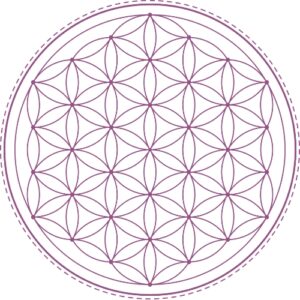
One of the most basic and important shapes. This pattern of overlapping circles creates a flower-like form, representing the process of life creation and the universe’s basic structure. It’s considered the blueprint for all life forms and forms the basis for many other sacred geometric shapes.
2. Seed of Life
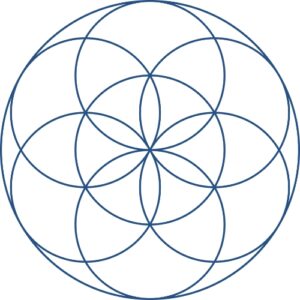
This shape consists of seven circles forming the central part of the Flower of Life. It symbolizes the first seven days of creation and represents the origin of life.
3. Egg of Life

Developed from the Seed of Life, this shape represents the process of cell division. It symbolizes the growth and development of life.
4. Torus
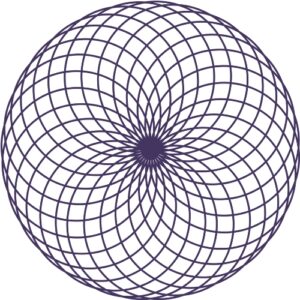
This donut-shaped three-dimensional figure represents the circulation and transformation of energy. It’s also considered a model for the flow of universal energy and the human aura field.
5. Metatron’s Cube
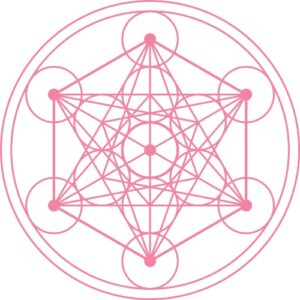
This complex three-dimensional figure derives from the Flower of Life. It encompasses all Platonic solids (tetrahedron, cube, octahedron, dodecahedron, icosahedron) and is said to represent the basic elements of the universe.
6. Vesica Piscis
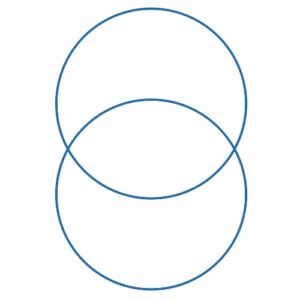
Formed by the intersection of two circles, this shape symbolizes creation, harmony, and the trinity. It’s considered sacred in many religions and spiritual traditions.
7. Spiral
This spiral shape, commonly found in nature, represents growth and evolution. It’s closely related to the Fibonacci sequence and the golden ratio.
8. Pentagon and Pentagram
These shapes symbolize harmony and perfection. They’re seen in human body proportions and the arrangement of petals in many flowers.
9. Hexagram (Star of David)
Formed by two overlapping equilateral triangles, this shape expresses the harmony of heaven and earth and the fusion of masculinity and femininity.
10. Cube
This shape symbolizes the material world and stability. It’s also associated with the four elements (earth, water, fire, air).
11. Dodecahedron
This shape is considered to represent the harmony and perfection of the universe and is associated with the 12 zodiac signs in astrology.
12. Threefold Flower of Life
This complex shape, formed by overlapping three Flowers of Life, is said to represent higher consciousness and multidimensional reality.
Applying Sacred Geometry in Daily Life and Meditation
Sacred geometric shapes hold meaning beyond mere beautiful patterns. Incorporating these shapes into daily life and meditation may lead to deeper insights and awareness.
1. As a Focus for Meditation
Using shapes like the Flower of Life or Metatron’s Cube as meditation objects can help achieve deeper states of concentration. Focusing on the complexity and symmetry of these shapes can also aid in mindfulness practice.
2. As a Healing Tool
Sacred geometric shapes are believed to help harmonize and purify energy. Wearing or placing these shapes in living spaces may help attract positive energy.
3. Creative Inspiration
For artists and designers, sacred geometric shapes can be a rich source of inspiration. Incorporating these shapes into artwork can express deeper meanings and beauty.
4. As a Tool for Self-Exploration
Understanding the symbolic meanings of each shape and reflecting on them in relation to one’s inner self can lead to insights for self-understanding and personal growth.
5. Harmony with Nature
Understanding patterns and laws of nature through sacred geometric shapes can foster a deeper connection with nature. This can also raise awareness about environmental protection and sustainable living.
Conclusion
Sacred geometry is a fascinating discipline that explores the fundamental blueprints of the universe. Each of the 12 important shapes symbolically expresses themes such as life, creation, and harmony. By understanding these shapes and incorporating them into daily life and meditation, we may be able to feel a deeper connection to the order of the universe and the laws of nature.
Sacred geometry should be viewed as a tool for philosophical and spiritual exploration rather than a scientifically rigorous discipline. However, its beauty and profundity provide many people with an opportunity to contemplate the mysteries of the universe and the wonders of life. By engaging with the world of sacred geometry, we can become aware of the amazing harmony and order hidden in our daily lives and gain a richer perspective on life.


